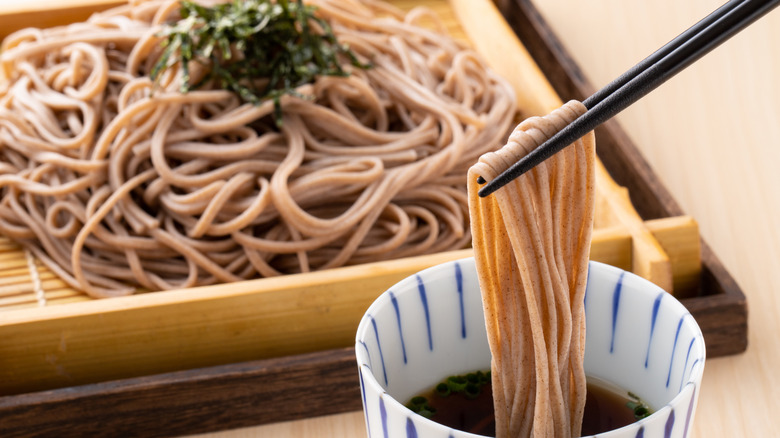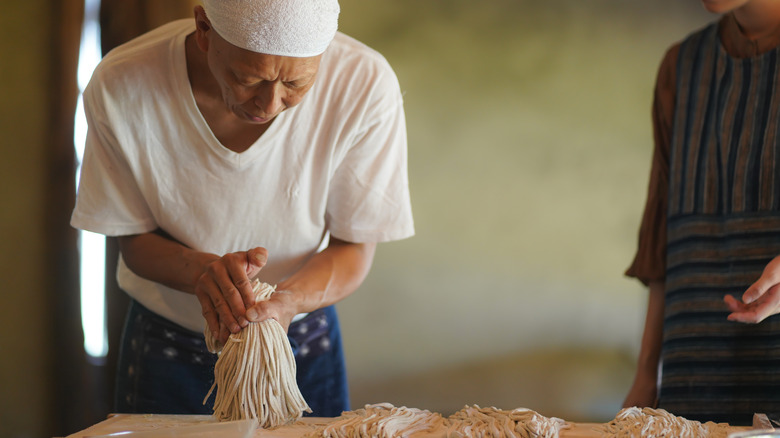Why You Should Slurp Soba Noodles, Not Chew
In Western dining etiquette, one knows not to chew with their mouth open or make loud slurping noises as they eat a plate of pasta. However, in many East Asian cultures, slurping is only natural. Luisa Tam, a journalist for the South China Morning Post, recalls when she went to Europe and warned her French host before slurping down a bowl of noodles. Much is the case for anyone with different table manners than those around them.
There is no real consensus on how people of a culture are to eat, but slurping is necessary when it comes to Japanese soba noodles, per Nippon. Just like there is a three-step method to carefully eat a steaming xiao long bao or a specific process to consume perfectly wrapped sushi, there is a proper manner to eat the buckwheat dish (via Migrationology).
Soba noodles date back to the Edo period and can be prepared in various ways, from the type of wheat it uses to whether it's served hot or cold, per Wattention. These nutty yet light buckwheat noodles have truly become an essential dish in Japanese cuisine: They're even a part of an NYE tradition to promote longevity of life. But what is the reason for slurping soba noodles rather than chewing?
Slurping is a sign of enjoyment and enhances flavor
According to Tokyo Treat, outdoor stalls served as dining establishments during the Edo period, which meant that eating outside of the home was usually quick and on the go. So, perhaps there is a correlation between quick slurping to get it down the hatch and shorter meal times. Although this may explain why slurping is prevalent for all types of noodles, from udon to ramen — soba, in particular, has more specific reasons.
Kokoro Cares states that a slurp indicates how much you love your food — the louder and more enthusiastic, the greater your compliment to the chef is. And just like the reason for slurping ramen, this method effectively cools down your soba noodles while you eat them.
Chef Yasunori Kasuya shares with Savor Japan that slurping isn't something to be embarrassed by as it allows you to relish the faint flavor of the buckwheat and the smooth texture (via YouTube). To do this properly, he instructs that you should only dip your soba noodles in the soy sauce base partially so that the buckwheat flavor of the noodles is the first thing you'll taste. And to ensure you enhance each bite, adding bits of wasabi and green onions to the base of the soup as you eat rather than all at once is essential.

